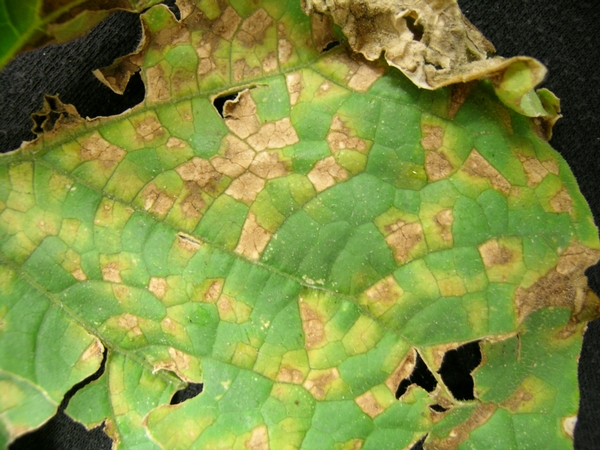Aug 21, 2019Cucumber downy mildew moves across Michigan
Downy mildew on cucumber has been verified in three cucumber producing counties on the west side of Michigan and one pickling cucumber producing county on the east side of Michigan. The downy mildew on the east side of the state was verified Aug. 20, 2019, and the infection was very young and appeared to be quite recent.
Results from our spore trapping where we have placed spore traps are posted on our Downy Mildew News page as soon as the spore reels have been processed. Thus far this season, our spore traps are picking up cucumber downy mildew spores at low numbers, but our counts are always one week behind due to processing of the spore tapes. We are also able to distinguish between cucumber and hop downy mildew spores using molecular tools.
The recent stretch of fog, humid and wet weather that some regions of the state have experienced favors downy mildew. It is very important that cucumber growers use a proven downy mildew program with fungicides that have shown good activity in our yearly Michigan research plots including:
- Ranman + chlorothalonil or mancozeb
- Orondis Opti (chlorothalonil is part of the premix)
- Elumin + chlorothalonil or mancozeb
- Zampro + chlortothalonil or mancozeb
Alternate among these four treatments using a seven-day application interval. Growers in the state should be using this short, seven-day application interval for their fungicide sprays. Applying fungicides when downy mildew is already well established in the field is not recommended because it can be too late to protect the crop and contributes to the downy mildew pathogen developing resistance to our most important, effective fungicides.
We will be watching all our production areas carefully for the movement of downy mildew into these regions. We are working with growers, scouts, consultants and Michigan State University Extension educators to make sure we get suspect samples immediately and make a diagnosis. Click here for instructions on how to submit samples.
Also, keeping an eye on the spore traps totals across the state could be helpful in knowing when the cucumber downy mildew pathogen is in your production region. The cucumber downy mildew pathogen does not overwinter, and the spores move via air currents.
Note: Cantaloupe crops are also at risk of becoming infected by downy mildew and should be protected using the fungicides that have been proven to be effective in MSU research cucumber field studies.
– Mary Hausbeck, Michigan State University Extension, Department of Plant, Soil and Microbial Sciences
Downy mildew lesions on a cucumber leaf. Photo: Mary Hausbeck, MSU















